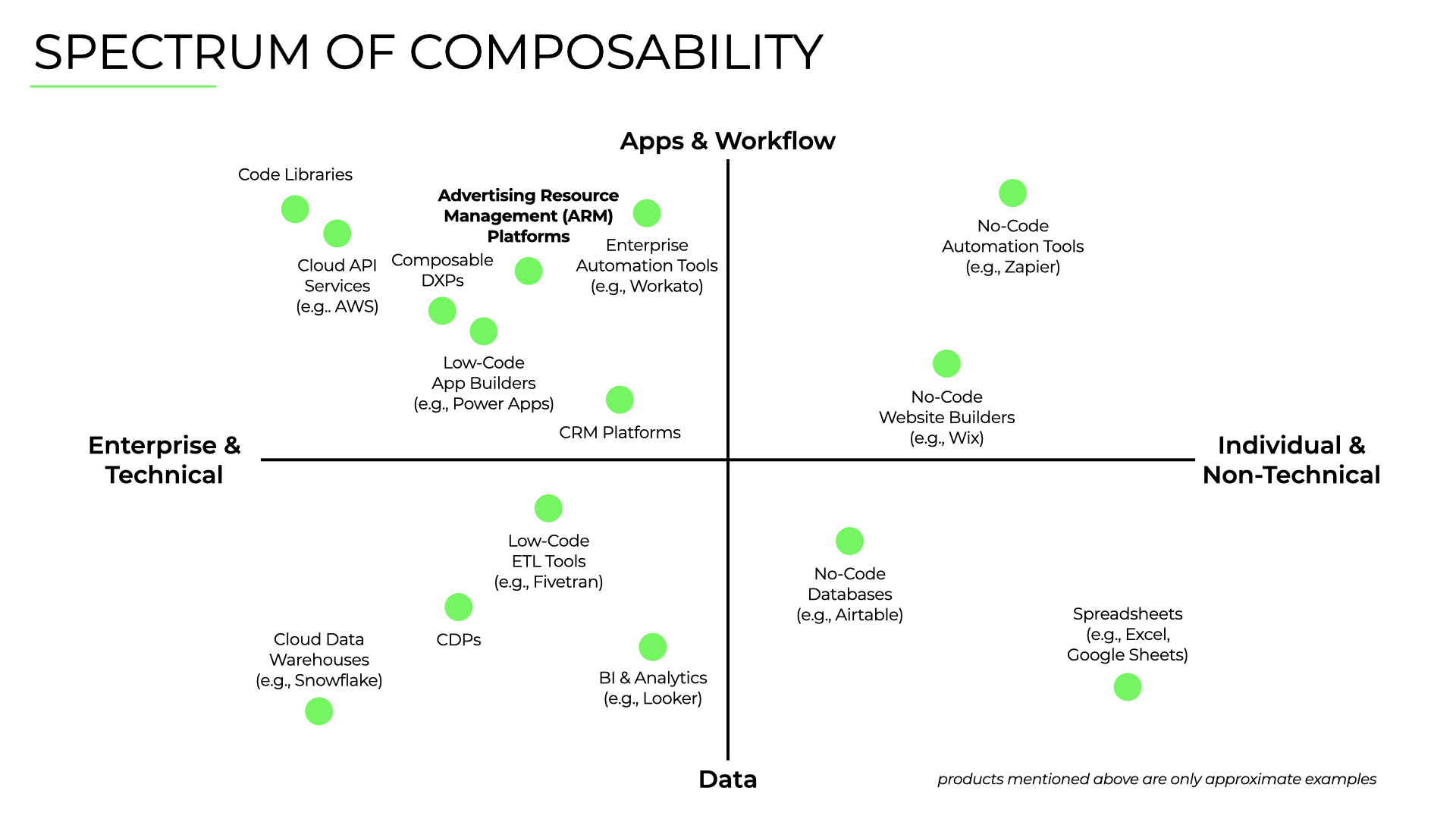Composability in Advertising: Harnessing the Power of AI and Automation with MINT ARM
Introduction
Discover MINT's Game-Changing ARM Platform and AIRE AI for Advertising. Experience the turning point in advertising with MINT's ARM platform and AIRE AI. Streamline resource management, maximize ROI, and respect user privacy in a privacy-first world. Learn how AIRE's AI enhances decision-making. Embrace the future of advertising with MINT.
Introduction:
The advertising industry is in a constant state of evolution, with one of the most significant trends in recent years being the rise of composability. Composability refers to the ability to combine different components to create new and innovative solutions, often leveraging the power of AI and automation. From breaking information silos through data composition to integrating heterogeneous solutions for optimal workflows, composability has gained considerable traction. In this article, we will explore the concept of composability and its profound impact on the advertising industry, with a special focus on MINT ARM, an Advertising Resource Management (ARM) solution.
Understanding Composability:
The vast spectrum of composability as depicted by chiefmartech.com, encompasses Apps & Workflows, pure Data, and spans from Enterprise & Technical to Individual & Non-Technical realms. It ranges from "no-code" data composition in spreadsheets to AI-powered automation tools like Zapier and advanced technical solutions like Cloud Data Warehouses and Cloud API Services.

However, the challenge lies in finding the right balance between control and limitations within composability.
The Trade-Offs:
Composability offers a trade-off between granularity and control. Composing with code, powered by AI algorithms, provides high granularity and unlimited flexibility but also carries the risk of mistakes. On the other hand, using AI-driven no-code tools reduces risk but limits capabilities.

The industry has witnessed remarkable progress over the past 5-10 years, with AI and automation innovations filling the gap between these extremes. Low-code platforms and AI-powered no-code products provide varying levels of flexibility while maintaining safer guardrails. It becomes crucial for advertisers to select the preferred trade-off point along the composability curve.
Composability in the Advertising Industry:
In the advertising industry, a composable stack, augmented by AI and automation, empowers advertisers to assemble different ad formats, targeting strategies, and measurement tools to create personalized and effective campaigns managed from a single platform. Several factors have contributed to the rise of composability in advertising.
Firstly, the increasing fragmentation of the media landscape necessitates targeting messages to specific audiences for campaign success. Composability, enables advertisers to tailor campaigns that align with the unique requirements of each channel or platform, optimizing engagement and conversion from a single unifying platform.
Secondly, the availability of extensive data plays a pivotal role. Advertisers now have unprecedented access to all kinds of data, which can be harnessed to create more personalized and relevant ads and measure campaign effectiveness. Composability streamlines data collection and analysis, facilitating continuous campaign improvement and real-time optimizations.
Thirdly, the advent of cloud computing, powered by AI and automation, has made composability more feasible. Leveraging cloud-based solutions allows seamless access and integration of diverse software and services, a crucial prerequisite for successful composable advertising campaigns. AI and automation enable intelligent workflows and decision-making, enhancing campaign efficiency and effectiveness.
Benefits and Challenges of Composability in Advertising:
Composability, driven by AI and automation, offers several benefits to advertisers. Firstly, it enhances campaign effectiveness by combining different ad formats, targeting strategies, and measurement tools, leveraging AI algorithms and automation for greater precision and optimization. Secondly, it saves time and resources by utilizing pre-built AI-powered components and automation to swiftly create new campaigns, freeing up advertisers to focus on other strategic aspects of their business. Lastly, it increases campaign flexibility, enabling quick adjustments and automation to adapt to market changes or customer needs, powered by AI and intelligent workflows.
However, there are challenges associated with composability in advertising, particularly when incorporating AI and automation. It requires expertise to effectively utilize available components and combine them for optimal results. Additionally, seamless integration is crucial for successful composable campaigns but can be complex, expensive, and time-consuming.
Composability with Advertising Resource Management (ARM) Solutions:
MINT ARM, an AI-powered Advertising Resource Management (ARM) solution, enables companies to benefit from best-in-class solutions and granular access to data and information without the need for extensive in-house development. Leveraging AI and automation, MINT ARM maximizes the potential of composability in advertising.

Considering the composability spectrum, MINT ARM fits between Enterprise Automation Tools and Low-Code App Builders. It offers enterprise-grade capabilities while handling the technical elements through the support of the MINT team during onboarding. This ensures a high level of granularity without the complexity and limitations of proprietary internal tools, with AI algorithms and automation at the core.
MINT ARM effectively addresses the challenges of composability in advertising, particularly when incorporating AI and automation. By providing an intuitive platform it shifts the focus from intricate knowledge of platforms and strategies to strategy alone, enabling better decision-making. Automation then streamlines workflows and optimization processes, empowering advertisers with intelligent insights and automation capabilities.
Furthermore, MINT ARM eliminates the need for manual integrations by providing over 400 AI-powered integrations across 16 different channels, both online and offline. This comprehensive solution offers readily-available options that cater to the unique needs of every company, with AI and automation enabling seamless integration and data-driven decision-making.
Conclusion:
The rise of composability in the advertising industry signifies a significant trend that has the potential to revolutionize the creation and management of campaigns. By leveraging composability, AI algorithms, and automation, advertisers can create personalized, effective, and flexible campaigns while getting a single source of truth for all their advertising resources. As the industry continues to evolve, composability, AI, and automation are expected to play an even greater role. MINT ARM emerges as a powerful solution, minimizing the challenges associated with composability while harnessing the full potential of AI and automation for advertisers.



%20MINT_642%20App%20Announcement.png)